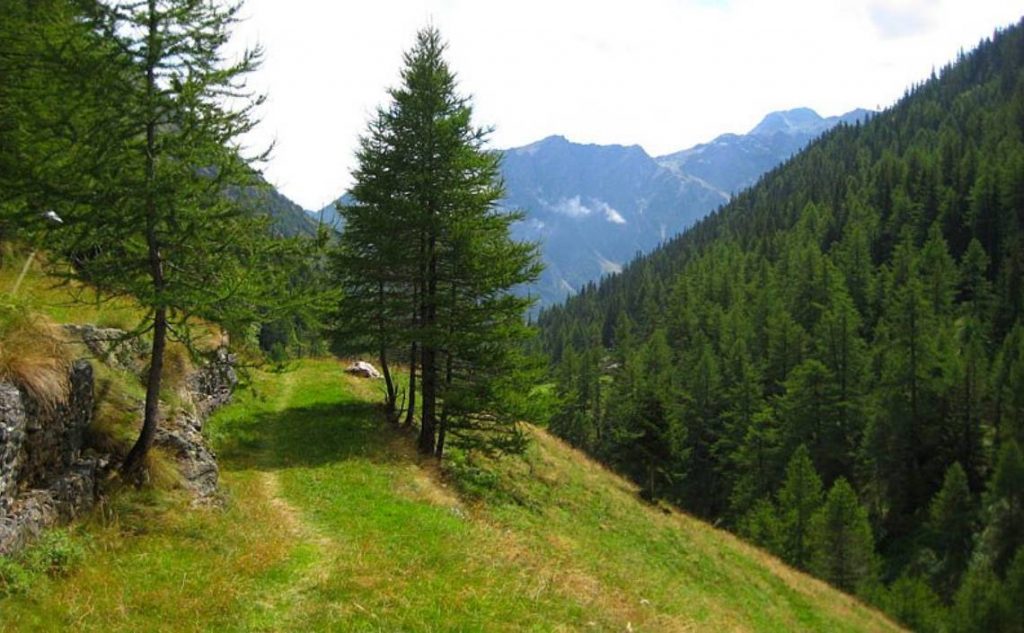Italy - the Alps
For those starting from Northern Europe, the Great St. Bernard Pass (2473 m) and the Alps are the first real obstacles to overcome. After passing through the mountains, alpine meadows, streams and coniferous forests you suddenly find yourself in fields and the Mediterranean climate. In the Aosta Valley you will walk on mule tracks between stone walls, going from castle to castle, between the mountains that stand looming and whitewashed. The Dora Valley is a wide and deep groove, holding the crystal waters of the river. It finally widens into the basin of Ivrea, with its lakes, like bright mirrors that reflect the surrounding outstretched vineyards.
The beauty of the alpine landscape is accompanied by the richness of the area’s artistic heritage. Aosta stands still enclosed within the walls of the once Roman city. You will see the theatre and the towers of ancient Rome, and will pass – just like medieval pilgrims – under the Porta Pretoria, near the Arch of Augustus, which from the first century has welcomed strangers into Italy. You will find traces of the old road to Gaul, the Roman Eporedia, carved into the rock in Donnas and again in Ivrea.
On the sites of pagan temples medieval churches have risen. Periodically along the route you must stop to contemplate the beautiful Gothic portals, the bell towers – each a pilgrim’s point of reference. Every bell corresponds to a town, one of the many countless hamlets that make up the country, all surrounded by meadows. On the path your ears will pick up the distant sound of cowbells. In each village have the chance to find refreshment and to try distinctive local flavours: black rye bread, alpine butter, Fontina cheese and delicious hams.
Wind your way through the steep sunny slopes, along the mule tracks that run along the vertical lines of the vineyards, where branches are supported stone pillars and the sun warms the grapes. In late winter rosemary bushes and almond trees bloom at the foot of the last Alpine foothills. The towns of Bollengo, Viverone, Roppolo recline on the gentle slopes of the morainic deposits of the Serra d’Ivrea. Here you will find beautiful towers and wooden lodges, still enclosed within medieval walls. The Dora River continues through the increasingly broad plain, which now fades into the Po Valley on the horizon.



